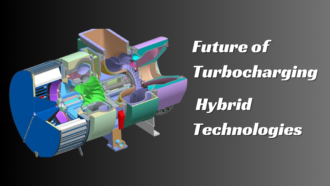Explain Different Types of Network Devices & Their Functions
- 1 What are Network Devices?
- 2 Different Types of Network Devices & Their Functions
- 2.1 Access Point (AP)
- 2.2 Hub
- 2.3 Router
- 2.4 Switch
- 2.5 Bridge
- 2.6 Modem
- 2.7 Gateway
- 2.8 Repeater
- 2.9 Final words
If you are willing to know how different types of network devices work, then you have arrived at the right place. In this article, we will discuss different types of network devices and also explain their functions. However, to help you understand better, we should clarify what exactly the network devices are.
What are Network Devices?
Network devices are the physical devices that facilitate the communication process between multiple hardware devices on a computer network. Network devices allow these hardware devices to connect and communicate with one another. Networking devices work in different computer network segment and carries out different tasks.
To maintain and expand various LANs and WANs, a network may need hundreds or thousands of different network devices. Anything that makes it easier for data to travel from source to destination is considered a network communication enabler. The fundamental components of a large network include network devices, such as routers, hubs, repeaters, bridges, modems, gateways, etc.
A network with multiple devices transmits an excessive amount of data packets over the same path. This can lead to network congestion and decreased performance. This is where network devices come into play. The addition of a network device makes it easier for many systems to seamlessly share network resources without congesting the network.
Different Types of Network Devices & Their Functions
Now let us shift our focus to the different types of network devices and their functions. Here are the most common network devices used in everyday life:
- Access Point
- Hub
- Router
- Switch
- Bridge
- Modem
- Gateway
- Repeater
Access Point (AP)
Access Points, one of the most popular network devices, serve as a router that sends data to another access point or a bridge that links a standard wireless network to wireless devices. Both functions operate on the second OSI layer, the data link layer.
A wireless LAN (WLAN) transmitter and receiver are produced by wireless connection points (WAPs). Access points typically consist of a networked machine with a built-in transmitter, antenna, and adaptor.
Hub
A physical-layer device known as a hub operates on individual bits as opposed to frames. The hub simply recreates the bit, increases its energy intensity, and transmits it into every other interface when a bit indicating a zero or a one comes from one interface. A hub delivers a duplicate of every bit it gets from one of its interfaces to every other interface.
Particularly, a collision occurs and the nodes that originated the frames must retransmit if a hub gets frames from two different interfaces simultaneously. A network hub lacks the intelligence or routing tables needed to distribute all network data across all connections and transfer information.
Router
A router “routes” data packets based on their IP addresses. The router is basically a device at the network layer. Because it can automatically determine the optimum route to transport network packets from source to destination, a router is often also referred to as an intelligent device.
A router looks at the destination IP address of a data packet and uses headers and forwarding tables to decide how to send the packets most effectively. It uses protocols like ICMP to communicate between two or more networks.
Switch
A switch is a multiport networking device, similar to a router, that comes with buffer and design features that can enhance its performance and efficiency (having many ports implies less traffic). This particular networking device works at the data link layer. Computers can be plugged into a switch’s many ports, making it an efficient option as far as the transmission of data is concerned.
It receives incoming data frames, assesses the destination address (destination MAC address), runs the appropriate checks, and then transmits the frame to the connected device. The switch does error checking before it forwards the data packets, making it extremely efficient by only passing good packets to the intended port and not forwarding error-filled packets.
Bridge
Next on our list is Bridge, which happens to be a network device that operates at the data link layer. By scanning the MAC addresses of both the source and destination, a bridge can filter material in addition to acting as a repeater. Additionally, it is deployed to link two LANs that share the same protocol. It is a two-port device, meaning it only has one port each for input and output purposes.
Modem
A modem encodes and decodes digital data for processing by modulating and demodulating analog carrier signals, also referred to as sine waves. The words “modulate” and “demodulate” are combined to make the word “modem,” which accomplishes both of these duties concurrently.
Gateway
A gateway is a telecommunications network node that joins two networks using various transmission protocols. Given that all data must communicate with the gateway or travel through it before being forwarded, gateways can be considered network entry and exit points. In the majority of IP-based networks, communication between nodes on the same LAN (local area network) segment does not pass through at least one gateway.
In both personal and professional settings, the main advantage of employing a gateway is that it combines internet connectivity into a single device. In an enterprise environment, a gateway node can act as a proxy server, firewall, or/and both.
Repeater
Last, but not least on our list of network devices is a repeater, which happens to have two ports and operates at the physical layer. Before a signal becomes corrupted or too weak, a repeater regenerates it over the same network, enabling the signal to be broadcast over a greater distance. It’s worth noting in this regard that repeaters don’t boost the signal. In fact, repeaters incrementally copy the signal as it deteriorates and renews it at its original power.
Final words
We hope that our article explaining the different types of network devices and their functions has been helpful to you. Now, you can design and build a secure network for your organization. In this regard, it is crucial to continue monitoring your network devices and the activity around them to maintain optimal security and availability of the network. This process will help you identify configuration issues, hardware problems, and cyber attacks, as soon as they occur.


















